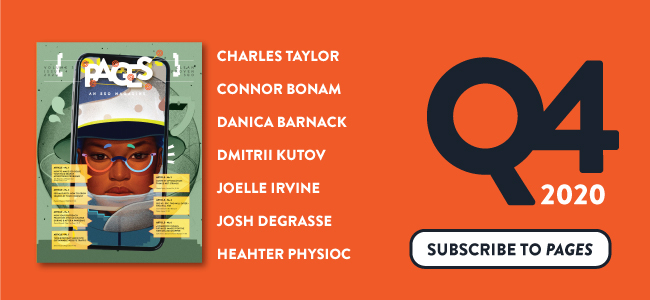
With all the time and work that goes into good SEO, how do you find time for content creation? Content creation is a major component of successful SEO, so it’s in your best interest to figure out how to fit it in between managing clients, SEO campaigns, and other tasks.
The good news is that you may already be doing
most of the work. All you need to do is recycle your daily activities.
Quality content is all about producing intuitive and useful information, right? With some creative repurposing, you can boost your efforts by using your routine tasks as the basis for creating content people can’t get enough of.
When I say routine tasks, I mean things like email updates and metrics explanations — anything you do on a regular basis — and turn it into practical materials like guides, blogs, and other saucy goodness. Suddenly, your productivity has doubled — all without having to slow down or reinvent the wheel.
Wake Up and Smell the Bacon

The first step is to organize your day to day and get a sense of exactly how you spend your time and what tasks take up the majority of your time. Not only is this a great general practice for time and task management, but it will also reveal your shortcomings.
Are you an SEO specialist?
If so, I bet you found you wrote a lot of monthly SEO reports, or spent hours upon hours on the phone or in meetings with clients, explaining all about the metrics, what they mean, and why you are so proud of them.
Are you a designer?
Maybe you draw sketches, develop wireframes, turn ideas into layouts all day long. I have been there myself. In fact, I remember a time I spent at least 6 hours in a YouTube rabbit hole, watching timelapses of different builds — all to get the know-how to do the builds myself.
Or maybe you are in management?
You’d think that those who manage other people’s time would be completely on top of their own time management. In reality, it’s a struggle to successfully maintain both. Or, maybe you do have the time to focus on your own management, but by the end of the day, you are so burnt out you have nothing left in the tank, leaving you to push the work off until tomorrow — only to not get to it at all. Believe me, I know how this happens, because I am arguably the best (worst?) procrastinator, having 30 years experience under my belt. (I did, in fact, start training to be a procrastination master the day I was born.) But, in all seriousness, lack of time and/or procrastination shouldn’t be a deal breaker. There is always something you already do that can be turned into awesome, shareable content.
The “Espresso Process”
Why Espresso? Cause I love coffee, no other reason, really.
Write a list of every tasks you do on a routine basis. Include anything you do that takes any time at all, even if it seems like an insignificant part of your day. I’m talking about things like telephone calls, emails, presentations, graphics, notes.
The great part about this strategy is that you might find a gem in the tiniest activities — things you don’t even consider tasks.
- Once you’ve got a list, think about what each task represents. Why is each task important to your day, and how can that task translate into quality content? Basically, separate the tasks into buckets of “what it could become” — podcasts, blogs, videos, etc.
Do you see what I am getting at? Whether you know it or not, you’re already spending a good deal of time creating content during your regular work day. - Think ahead before you start on your tasks.
Now that you have these buckets full of potential, recycled awesomeness, find out which ones are not getting recorded and make sure to set up some kind of recording process for each one. By recording yourself as you work, you’ll be able to source reference material and copy your process without wasting time.
Long emails become blogs, long phone conversations grow into podcasts, presentations convert to videos. Use screenshot videos to record yourself fiddling around with a new tool. Your everyday work tasks can become recorded and used as a form of note taking. Recycle, recycle, recycle. - Make use of the content you’re already creating!
This is the most important part. We all have different levels of experience and expertise. Remember that though your day-to-day experience may be routine for you, sharing it can be incredibly useful for helping others learn. So take advantage of this by turning work you had already planned to do into content.
You can get your daily work finished and produce content at the same time. Win-win!
But Why?
Generating content comes with many benefits:
- Free website traffic
- Efficient time management
- Easy idea generation
- Free cookies
Well, maybe no cookies. It’d be nice though…
In the SEO world, we say, “Content is king!.” I think it should be said, “Great, quality content is king!” But, well, that’s just not as catchy.
What matters most in business? Sales. Where do sales come from in the Internet Marketing world? Online leads. Where do leads come from? Website visits. Without having any substance, there is no way your website will rank, and therefore, you’ll have no website visits. In order to create content you need content ideas; which can take a lot of extra time — time which, debatably, none of us have. The “Espresso Process” takes care of that. No need to reinvent the wheel, just blueprint and sell it.
By the way, are you still thinking about free cookies? I know I am.
The Essence
Well, here we are at the end of the road. Full of“Espresso” and make-believe cookies. Let’s get to business.
“How, oh how, can I recycle my work?,” you ask. “Please, master, put me on the true path,” you fervently supplicate (my editor told me to use these words — I don’t even even know if they are real), presenting the gift of cookies.
No worries, Padawan, I will show you some activities we find very useful to do every day in order to help us recycle at the office.
If you’ve ever gotten carried away with an email — answering a client’s question or providing a detailed breakdown with screenshots and formatting and the whole ordeal — you might as well turn this into an article, a blog post, or a guide.
Even incredibly specific information, so long as it’s not proprietary for the client, can be valuable and fill a useful niche. You’ve already done the work, and people don’t typically return to emails once they’ve been sent and resolved.
It’s perfect for a written piece as you’ve already got the related screenshots and notes, and it’s most likely written in a business tone. If it’s a topic you speak about frequently, you can even file it away as a reference guide, something that will save you time in the future. Instead of repeating yourself and writing a whole new email every single time, just refer them to your website. Simple and efficient.
Frequently Asked Questions
If you find yourself answering the same questions again and again, turn the answers into an FAQ and make life easier for yourself. If you’ve already answered the question over email, on the phone or in person, just write it down already (or maybe make a little video), and there you haveJohnny another traffic-generating material.
You’ll have a continuously-growing piece of content, and you can spend less time answering the same questions over and over. That’s a 2-in-1, my friend! That’s almost as good as creamer and sugar — all in the same packet.
Sales Presentations
When you give sales presentations, you are often presenting data that can be applied more universally. As long as you aren’t revealing confidential information, you should record your presentation to get more out of it. Put the video on your YouTube channel, blog, or website, and suddenly you have an excellent sales tool working for you 24 hours a day.
Phone Conversations
People often overlook phone conversations as a source of useful information. You might be articulating an idea or explaining a concept really well, so record it if you can. Later, you can transcribe the call and use it for a blog post that covers the subject, or you might just want to insert the audio clips themselves into a podcast to save time and make the most out of your phone call.
Speaking Events
If you’re getting on stage, chances are you have something worthwhile to say. That information will most likely be useful for people even if they’re not at the same event, so whip that camera out, and put on the best show.
You can use the transcript for a blog or article snippets or you can upload the video directly to your media page and expand your audience from a hundred people at the event to millions of online viewers. Even niche information can be really valuable, and you’re already giving the speech, so why not get that extra bit of value from it?
Learning Something New
When you set out to learn a new process or figure out a new tool, you can use that opportunity to share your exploration with others. Before you start, set up a recording process and create a video of your experience.
Whether you edit the video to highlight successful discoveries, or leave it unedited to show people what works and what doesn’t, it can serve as a useful guide or reference for others trying to learn the same thing. Make the successful attempts into a ‘how to’ series, while unsuccessful attempts can become the “how not to” vlog.
Time Lapse Recording
For some roles, like those held by designers and developers, it’s natural to take advantage of the tools available.. Share your typical work process as a form of content, and it will appeal to a wide range of people. All you have to do is hit ‘record’ on a screen recording software and work like you normally would.
Timelapse the video, and you’ve created something worth watching. This kind of content is incredibly popular with both specialized and general audiences for the behind-the-scenes view it offers.
Presentation With Slides
PowerPoint is incredibly common, particularly in the corporate world. In almost every meeting you attend, you’ll see slides to go over this or that.
If you have a presentation with slides, that means you’ve already written and produced a solid piece of content that can be shared with a larger audience. Similar to other company-specific content, generalize the data, remove any private information, and you’ve got a ready-made slide show that breaks down some useful concept or idea in a visually appealing format. It would feel right at home on websites like SlideShare, and the like.
Repeatable Research
Research is one of the most time-consuming tasks across all professions, but the information it provides becomes a rich resource. Chances are, if you benefit from the work you’ve done, others will too. You can turn notes and research reports into detailed guides or downloadables that can be posted on your site for others to use. You’ve already done all the work, so why not get some extra traffic and conversions by turning it into a valuable resource for others?
Reports
All SEO specialists create monthly or regular progress reports, typically alongside explanations of any abnormalities found throughout the month. These reports often provide clarity for clients, drawing their attention to both standard and unusual SEO fluctuations or details.
These reports can shed light on interesting and valuable ways you’ve been doing SEO right, or explain why a test didn’t perform as expected. These become evidence of what does and does not work for SEO in specific industries and is considered highly-seekable information.
They can easily be turned into a case study to show potential clients the value of SEO for their business, while also demonstrating your expertise and depth of knowledge. Again, it’s prime material for content on your site, and you’re already doing the work every single month.
It seems I’m out of cookies

With a little preparation and the right mindset, it’s easy to convert almost any daily task into an incredibly valuable piece of ready-made content.
Simply record yourself and be mindful of your process for each task, and you can spin that out into any number of content pieces for use across your website. It doesn’t always have to be perfectly straightforward either!
Straightforward tasks are great. Turning an SEO report into a case study is an excellent and efficient use of your time, but you can also use your process to explore other areas where content would be useful.
Say you run into a problem while learning a new tool. You Google “how to resolve this problem” and there’s no information, or no really good articles or answers. That means there’s space for a guide on how to fix whatever problem you’re having.
Just be creative and flexible, you’re creating content every day. Don’t let it go to waste, recycle the work!
I’m off to get cookies. We will see you next time :)
Subscribe to PAGES digital magazine. On the fly access. No waste, no clutter!


